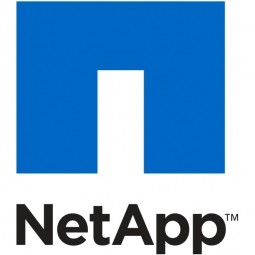
Technology Category
- Application Infrastructure & Middleware - Event-Driven Application
- Infrastructure as a Service (IaaS) - Cloud Computing
Applicable Industries
- Cement
- Construction & Infrastructure
Applicable Functions
- Logistics & Transportation
- Product Research & Development
Use Cases
- Construction Management
- Infrastructure Inspection
Services
- Cloud Planning, Design & Implementation Services
The Customer
GumGum
About The Customer
GumGum is a company that uses artificial intelligence to determine the context of a webpage and match targeted ads with the page. The company's AI systems scan images, text, and video on the page to make these matches. GumGum's services require a large volume of computing infrastructure with variable demand. The company's success has led to rapidly increasing costs in line with the demands on their highly scalable infrastructure. GumGum operates four Ad Server data centers, with the largest receiving up to 18 million requests per minute at peak times.
The Challenge
GumGum, a company that uses artificial intelligence to determine the context of a webpage and match targeted ads, faced a significant challenge in managing its computing infrastructure. The company's proprietary AI services required a large volume of computing infrastructure with variable demand. While AWS cloud was a solution, the costs were high, especially for AI workloads using GPU instances. The company's success led to rapidly increasing costs in line with the demands on their highly scalable infrastructure. The demands were cyclical, with ad serving varying throughout the year. At peak times, GumGum's Ad Server application received over 18 million requests per minute, requiring more than 130 AWS virtual machines to be provisioned. The company's costs grew to around $120k per month for EC2 on just one of their four Ad Server data centers. GumGum needed a solution that would help them use spot instances, save money, be easy for limited staff to use, and guarantee uptime.
The Solution
GumGum turned to Spot by NetApp to meet its needs. Spot offered Elastigroup, a fully managed service for provisioning existing applications on spot instances. The application's ability to predict and preempt spot terminations meant that the availability of applications running on these instances was guaranteed, backed by an SLA. Spot also addressed GumGum's deployment problems. Previously, GumGum was operating on in-place deployment through CodePlay, which resulted in capacity drops and production issues. Using Spot to create a blue-green deployment, GumGum could deploy the entire cluster at once, maximizing capacity and performance, identifying errors more rapidly, and resulting in 50% faster deployments. Additionally, GumGum used Spot Ocean analytics to monitor and right-size its AWS instances. Ocean compared the historical CPU and memory usage of spot instances and predicted future demand based on the past. It also helped GumGum maintain insights into development costs.
Operational Impact
Quantitative Benefit

Case Study missing?
Start adding your own!
Register with your work email and create a new case study profile for your business.
Related Case Studies.

Case Study
System 800xA at Indian Cement Plants
Chettinad Cement recognized that further efficiencies could be achieved in its cement manufacturing process. It looked to investing in comprehensive operational and control technologies to manage and derive productivity and energy efficiency gains from the assets on Line 2, their second plant in India.

Case Study
IoT System for Tunnel Construction
The Zenitaka Corporation ('Zenitaka') has two major business areas: its architectural business focuses on structures such as government buildings, office buildings, and commercial facilities, while its civil engineering business is targeted at structures such as tunnels, bridges and dams. Within these areas, there presented two issues that have always persisted in regard to the construction of mountain tunnels. These issues are 'improving safety" and "reducing energy consumption". Mountain tunnels construction requires a massive amount of electricity. This is because there are many kinds of electrical equipment being used day and night, including construction machinery, construction lighting, and ventilating fan. Despite this, the amount of power consumption is generally not tightly managed. In many cases, the exact amount of power consumption is only ascertained when the bill from the power company becomes available. Sometimes, corporations install demand-monitoring equipment to help curb the maximum power demanded. However, even in these cases, the devices only allow the total volume of power consumption to be ascertained, or they may issue warnings to prevent the contracted volume of power from being exceeded. In order to tackle the issue of reducing power consumption, it was first necessary to obtain an accurate breakdown of how much power was being used in each particular area. In other words, we needed to be able to visualize the amount of power being consumed. Safety, was also not being managed very rigorously. Even now, tunnel construction sites often use a 'name label' system for managing entry into the work site. Specifically, red labels with white reverse sides that bear the workers' names on both sides are displayed at the tunnel work site entrance. The workers themselves then flip the name label to the appropriate side when entering or exiting from the work site to indicate whether or not they are working inside the tunnel at any given time. If a worker forgets to flip his or her name label when entering or exiting from the tunnel, management cannot be performed effectively. In order to tackle the challenges mentioned above, Zenitaka decided to build a system that could improve the safety of tunnel construction as well as reduce the amount of power consumed. In other words, this new system would facilitate a clear picture of which workers were working in each location at the mountain tunnel construction site, as well as which processes were being carried out at those respective locations at any given time. The system would maintain the safety of all workers while also carefully controlling the electrical equipment to reduce unnecessary power consumption. Having decided on the concept, our next concern was whether there existed any kind of robust hardware that would not break down at the construction work site, that could move freely in response to changes in the working environment, and that could accurately detect workers and vehicles using radio frequency identification (RFID). Given that this system would involve many components that were new to Zenitaka, we decided to enlist the cooperation of E.I.Sol Co., Ltd. ('E.I.Sol') as our joint development partner, as they had provided us with a highly practical proposal.

Case Study
Splunk Partnership Ties Together Big Data & IoT Services
Splunk was faced with the need to meet emerging customer demands for interfacing IoT projects to its suite of services. The company required an IoT partner that would be able to easily and quickly integrate with its Splunk Enterprise platform, rather than allocating development resources and time to building out an IoT interface and application platform.

Case Study
Bridge monitoring in Hamburg Port
Kattwyk Bridge is used for both rail and road transport, and it has played an important role in the Port of Hamburg since 1973. However, the increasing pressure from traffic requires a monitoring solution. The goal of the project is to assess in real-time the bridge's status and dynamic responses to traffic and lift processes.

Case Study
Bellas Landscaping
Leading landscaping firm serving central Illinois streamlines operations with Samsara’s real-time fleet tracking solution: • 30+ vehicle fleet includes International Terrastar dump trucks and flatbeds, medium- and light-duty pickups from Ford and Chevrolet. Winter fleet includes of snow plows and salters.




